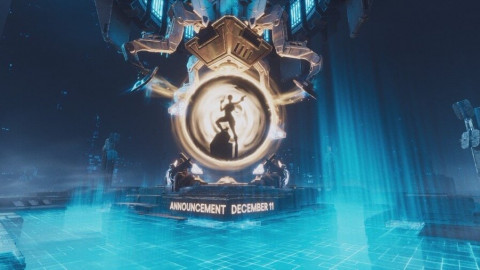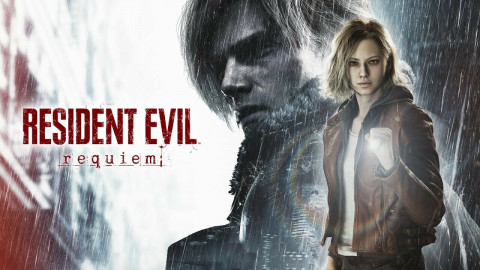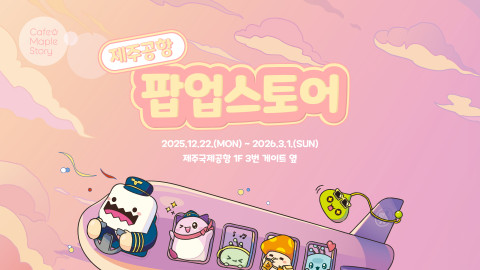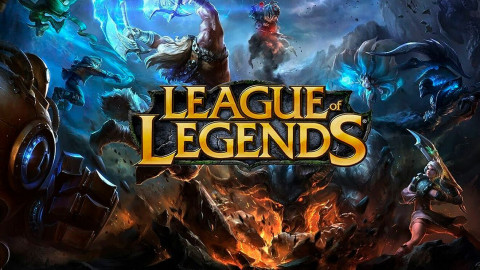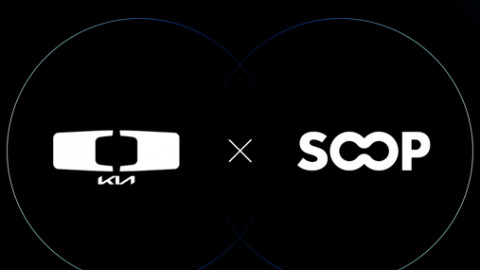
The Nexon Developers Conference 2017 kicked off on Tuesday, April 25 (KST) in Seongnam, Korea. The event features over 100 sessions in various fields of game development including design, programming, arts, business, and VR, all over a three-day period. On the first day of NDC 2017, Technical Artist Hakseong Lee from Blizzard Entertainment took to the stage to give an overview of Overwatch hero development from a technical artist’s point using Ana Amari as a case in point.
From character conception to actual implementation in the game, Lee walked people through the collaboration between artists and programming teams. Specifically, he went in depth explaining his role as a technical artist whose responsibility is to bridge the different teams in creating new heroes and events. From real-life examples that happened within the Overwatch team, the attendees were able to get a glimpse into the Blizzard technical artist’s work process.

Lee started out the talk by defining the term ‘technical art’. According to him and Blizzard specifically, technical art involves five aspects: collaboration, bridge, tech, art, and overall process. Being a technical artist means synergizing between the technical and artistic parts of the brain - it is commonly known that the left and right parts of the brain respectively handle logic and creativity.

Naturally, technical art serves as the bridge among artists or between artists and engineers in complementing one another. Additionally, a technical artist not only has to be familiar with technologies such as pipeline, script, rigging, simulation, and graphic resource management, but also has to have a general understanding of drawing, modeling, and animation. A good technical artist knows the overall process of game development from concept design all the way to when the final product launch.
As the title implies, responsibilities of a technical artist span across different disciplines. One of the main duties that Lee spends the most time on is solving problems arising between art tools and engine. He’s there to help artists with engineering problems and vice versa. Another one of his tasks involves pipeline, which describes the step-by-step work process in game development. He makes sure that artists can easily transfer their work from art tools to engine by setting up an effective work environment using a multitude of methods.
Lee also manages graphic resources like character modeling, animation, and texture size to ensure that the game’s running efficiently. Instead of doing it directly, he mostly asks artists to reduce asset size when necessary. His next responsibility is artist support. He develops features that artists and animators need but are missing from art tools like 3ds Max and Maya. Rigging is yet another important task for a technical artist. After a modeler creates a model based on concept art, Lee goes through a process called “skinning” to establish the character’s bones and skins. Then, he places controllers on the bones so that animators can freely move the model.

Character setting is what goes on top of rigging. If it weren’t for Lee, animators would have to allocate a lot of resources in animating moving parts like skirts and coats. In this process, a technical artist sets up a character using a physics-based engine to bring heroes to life and to make them look believable. Lee is also charged with creating breakable objects in the game such as benches, cacti, and the fire extinguishers found throughout the maps. His goal in this aspect is to add a bit of fun to the destruction players cause while in spawn points waiting for the match to start.

Lee explained that communication, self-improvement, and quality are the main virtues of a technical artist. Communication is vital because most of his duties require him to interact with other people from both engineering and art teams. He stressed that having no fear in communicating with others and the willingness to help them are what makes a good technical artist. Next, he emphasized the importance of keeping up with current technology such as new engines, scripts, and programming. Finally, he said that a good technical artist will tirelessly iterate on their work for the best quality possible without compromising.
Lee then moved on to briefly explain the art of Overwatch to give a context to the development of Ana. As a departure from other Blizzard franchises like StarCraft for sci-fi and WarCraft for fantasy, his team decided to pursue a brighter and more hopeful version of the near-future earth. In doing so, Overwatch’s art closely embraces these four unique features: diversity, a hopeful future, dynamic, and hand-crafted.

From the get-go, the developers pushed hard for diversity in heroes so that every player can find his or her favorite one among all the different colors, shapes, and sizes. Based on this key artistic design pillar, heroes were born with various cultures, nationalities, and back stories. “An inspiring future earth that is worth fighting for” was the basis for painting a hopeful future unlike the art from other Blizzard universes. To embody that principle, animations were designed to be dynamic; Play of the Game animations reflect the same dynamic nature. The last art design goal was to convey the look and feel of hand-crafted brush strokes such as smudges, scratches, and worn-out appearances.
The session’s final points were how Ana came to be the 22nd hero to the game as well as some of the challenges Lee faced in developing her. There are three approaches to hero design. First is to build on an interesting, unique concept art by adding character, story, and abilities to flesh out a hero. Heroes who were developed from concept art include Zarya, Winston, Mei, and Roadhog. The second approach is by design necessity. A case in point is Junkrat, who was created as a counter to turret heroes like Bastion and Torbjörn. The final approach comes from story, like Soldier: 76, Tracer, and Mercy, who are former Overwatch members with deep, immersive story lines.

What makes Ana unique is that she was developed from both story and design. Obviously, she played a pivotal role in providing a major story arc as one of the founding members of Overwatch. From a design point, the game needed a new support class because Zenyatta, Mercy, and Lúcio, while possessing their own specialties, did not fulfill a long-range support role.
Lee then outlined the general process for hero development starting with story, concept art, and hero design. In creating the concept art for Ana, the artists set her visual references as “middle east, badass sniper, and hijab”, combined with inspirations from the Many Mothers in the movie, Mad Max. In the hero design stage, many abilities were iterated and tweaked continuously. For instance, the development team consistently changed Ana’s Biotic Rifle damage, the ability to jump while zoomed in, and the POV of the sniper scope in this phase.

Once a design has been more or less decided, developers test the hero with a previous game asset. Widowmaker was used for testing Ana, the same way Zarya stood in for Orisa. Rough art is used at this point to start the animation process. Rather than animating finished art, a rough version is used for basic rigging tests. After continued testing and balancing proves to be successful, detailed art animation takes place to solidify rigging, set-ups, skins, animations, and victory poses. Then a hero cinematic and PTR testing roll out, followed by a live server release.
However, there were some technical challenges Lee encountered along the way. The first one he brought up was the issue of Ana’s long coat clipping through the ground due to her slouched idle pose when using regular cloth simulation. So, the team went with the next solution, which was to animate the coat using a process called bone driven pose. Unfortunately, it required too many resources to animate her clothes. The final solution was to blend the previous two techniques, so that the coat doesn’t go through the ground because it was tuned to read enough cloth simulation.

Another challenge involved rigging support. Since Ana has multiple weapons like Biotic Rifle, Sleep Dart, and Grenades, Lee had to support various rigging so that she looks natural when handling any one of her weapons. He also effectively supported animators to resolve the “crouching character” issue so that her thighs look more realistic when crouched. Another detail Lee helped with was adjusting the angle on her knee pad without needing more animation work.
The third and final challenge was simultaneously developing multiple skins for Ana. Previously, the team first made the base skin and built on that skin to create more. With Ana though, he worked on the base and legendary skins at the same time, which ended up helping him more quickly detect animation bugs. For example, Ana’s finger pierced through the gas mask when she put it over her lips in one of the highlight intros when using the Wasteland skin.

Lee surmised that Overwatch is the story of heroes from all over the world fighting for a better future. He added that it was only possible thanks to the passionate development team from different parts of the globe as well as those who enjoy the game across the world. Using one of the iconic quotes from the game, he concluded the session by urging the uninitiated to try out Overwatch because “the world could always use more heroes.”




Sort by:
Comments :0


